5 Things to Know About … Taaffeite
Long mistaken for spinel, taaffeite holds the distinction of being the only gem identified from a faceted stone.

But, as it turns out, there’s another gemstone that rivals spinel when it comes to identification confusion.
Enter taaffeite, a very rare gemstone that looks similar to spinel but isn’t as well known.
Taaffeite can come in various pink and purples shades like lilac, violet and mauve, as well as red, brown, bluish hues, gray, green and colorless.
I happened upon the gem while scrolling through Instagram, as one does, and immediately added it to my list of stones to cover.
I’m so glad I did; there are many interesting things about this gem beyond just its rarity, though that is of course one of its more notable aspects.
Here are five things to know about taaffeite.
1. It was long mistaken for spinel.
One of my favorite parts of researching this stone was hearing the story of how it was “discovered.”
In 1945, gemologist Count Edward Charles Richard Taaffe of Dublin, Ireland, was sifting through a parcel of cut and polished stones.
While examining them, he realized a small mauve-colored stone weighing 1.419 carats that looked like spinel might be something different.
Importantly, the gem was doubly refractive. Spinel, like diamond and garnet, is singly refractive.
Curious and wanting to investigate further, Taaffe sent the gem to the Laboratory of the London Chamber of Commerce for testing.

Researchers eventually confirmed it was a new species and named the stone after the gemologist.
Part of the new gemstone was used for analysis, and the remainder was returned to Taaffe as a 0.55-carat stone, according to the International Gem Society (IGS), standing as the first official chunk of taaffeite.
Taaffeite is the first, and still only, gemstone initially identified from a faceted gemstone.
Carl Larson of gem dealer Pala International called this “extraordinary” since cut gems are harder to identify than rough as an observer loses “clues” like the crystal system.
2. Here’s how it’s similar to, and different from, spinel.
At first glance, many taaffeites looks just like spinel. It’s once you get into the specifics that you’re able to spot the differences.
The two gemstones have a similar hardness (8 for spinel, 8 to 8.5 taaffeite), refractive index (1.1712-1.762 for spinel and 1.719-1.730 for taaffeite), and specific gravity (3.54-3.63 for spinel and 3.60-3.62 for taaffeite).
But, as mentioned above, taaffeite’s birefringence sets it apart.
Taaffeite also has a different chemical composition and crystal structure than spinel. Spinel forms in cubic crystals whereas taaffeite forms in the hexagonal crystal system.
3. It originates from only a few sources around the world.
The source of taaffeite was unknown for a long time. Eventually, small fragments were found in Sri Lanka and southern Tanzania, according to reference site GemDat.org.
Material also has come from Myanmar, and some lower-grade taaffeite has been found in China and Russia, according to the IGS.
It’s not surprising the gemstone has been mistaken for spinel, not only because of its similar appearance but also because, according to Gems & Gemology, it’s found mixed in with parcels of spinel.
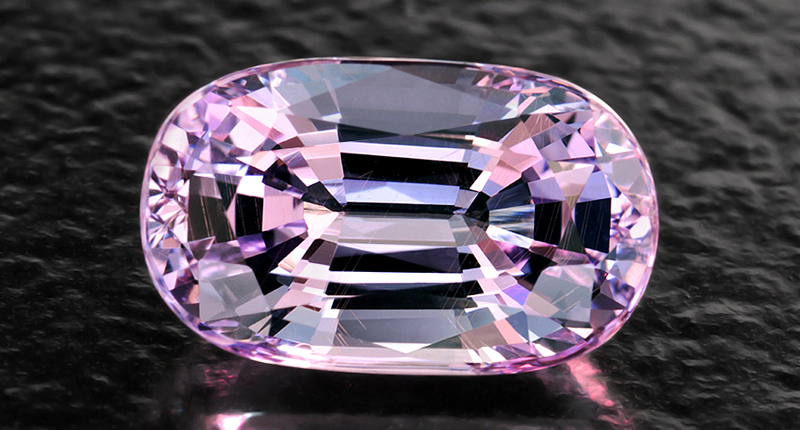
4. And it is rare.
For many years after Taaffe’s discovery, there were only known to be a few samples, and taaffeite remains one of the rarest minerals in the world, IGS said.
An article in the summer 1982 issue of Gems & Gemology said only about 10 specimens had been identified at that time, and estimates for how much taaffeite is currently in circulation today remain fairly small.
Due to its incredible rarity, it’s used exclusively for cut gemstones, multiple sources said.
Larson said he’s only worked with about 20 taaffeite stones in his seven years with Pala International, adding he’s only sold four stones he’d call fine quality.
According to Bonhams, the few taaffeites seen on the market are usually light in color and small.
5. There are options at many price points, but the high-end goods get gobbled up.
Because much of the material is lighter in saturation it can also be accessibly priced, between about $1,500-$2,500 per carat, according to Howard Fensterman Minerals.
But as is the case with most gemstones, top-quality pieces are rare and, thus, expensive.
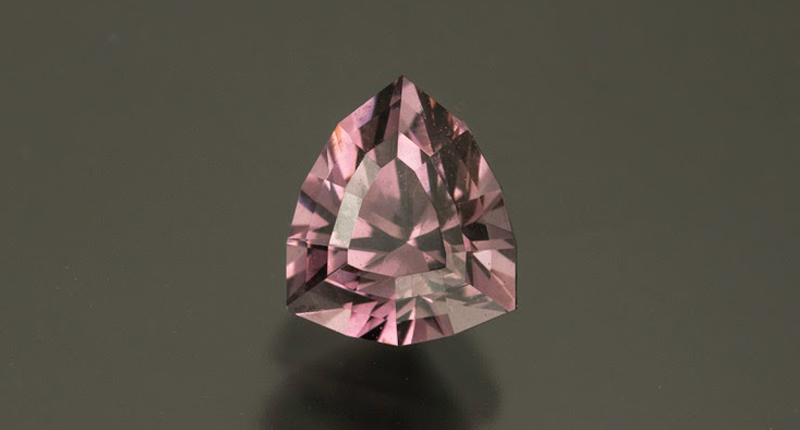
Larson said the light-pink material and dark-purple material tends to be priced at around $800 to $2,500 per carat.
Finer colors with more saturation can go up to about $5,500 to $7,500 per carat, while those with intense color that are clean inside can sell for as much as $15,000 per carat.
These fine stones sell very quickly, Larson added, noting most buyers he’s encountered are well researched on the subject and know as much, if not more, than he does about the gem.
There have even been a few examples of taaffeite at auction—in 2018, a lavender kite-shaped taaffeite weighing 5.34 carats went up on the block at Bonhams, where it sold for $20,000 including buyer’s premium.
David Weinberg of gemstone wholesaler Multicolour said they are seeing a few very specific markets for taaffeite: collectors, engagement rings and collector-investors.
While he noted demand has dipped in light of the coronavirus pandemic, it is still “generally better” than most stones, a performance he attributes to the increasing popularity of rare gemstones.
Larson also said the fine stones sell very quickly, adding any material that’s eye-clean with strong color and a good cut will sell relatively quickly, no matter the size.
The Latest

A pink topaz Belle Époque pendant-brooch and a Victorian Egyptian Revival choker were also highlights at a recent Anderson & Garland sale.

The event, which will co-locate with the Monterey Bay Jade Festival, will bring education sessions focused on jade to the United States.

The charm is a celebration of springtime as April showers bring May flowers with the piece’s cluster of diamond raindrops.

Bench jewelers spend years honing their skills, Jewelers of America’s Certification validates their talents.

The National Retail Federation expects retail sales growth to return to pre-pandemic levels as consumers continue to face inflation.


The 4-carat, old mine brilliant-cut diamond engagement ring was co-designed by Willis and New York City-based brand Karina Noel.

Rio Tinto unearthed the diamond at its Diavik mine in Canada’s Northwest Territories.
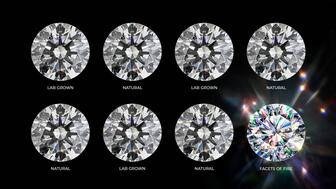
Natural diamonds mean more than lab-grown, but when every cut is ideal, they all look the same. Customers want more—Facets of Fire delivers.

The multisensory experience, open April 8-13, will feature the brand’s silver creations among dream-like scenes of natural landscapes.

The virtual event will take place April 7 at 3 p.m.

The pieces in “Animali Tarallo” portray animals from stingrays to elephants through portraits and interpretations of their patterns.

Parent company Saks Global said the iconic location will be open through the holiday season as it decides what to do with the space.

Ronald Winston, son of Harry Winston, donated the diamonds to the Smithsonian National Museum of Natural History in Washington, D.C.

The educational event will take place in Charlotte, North Carolina, this May.

The independent jeweler first opened its doors in 1888.

The layoffs come amid the TV shopping channel’s efforts to restructure and focus on live shopping through social media.

The debut event will take place in Miami’s Coconut Grove neighborhood this fall.

The roundtable will take place May 17 ahead of the trade show’s welcome dinner.

The “Peanuts x Monica Rich Kosann” collection features the comic strip’s classic vocabulary across 10 bracelet designs.

Three industry experts dive into the complexities of the material often marketed as an “ethical” alternative for metal in jewelry.

Diamonds are not only one of the most prominent gemstones, but the birthstone for those born in April.

The Utah-based company known for making wedding bands has acquired Doubloon Golf.

The longtime luxury executive led one of LVMH’s watch brands, TAG Heuer, for 12 years before taking over Bulgari in 2013.
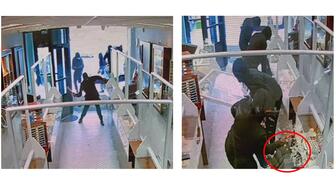
Authorities said the robbers fled with jewelry and 70 Rolex watches, later taking pictures of themselves posing with big stacks of cash.

Lotus Gemology founder Richard W. Hughes has translated Heinrich Fischer’s 1880 book “Nephrit und Jadeit” from its original German.
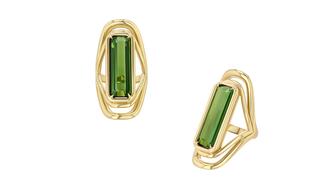
The ring's design features contrasting lines influenced by work from architecture-inspired photographer Nikola Olic.

The Conference Board’s index fell as consumers continued to worry about the impact of tariffs, the labor market, and the price of eggs.






























